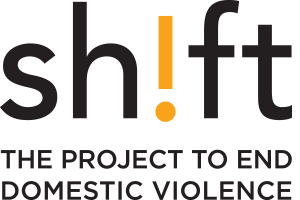Authors: Lana Wells, Janay Ferguson, Caroline Claussen, Elizabeth Dozois, Elena Esina, Casey Boodt and Liza Lorenzetti
Date: November-2013
In 2011, Shift: The Project to End Domestic Violence, was engaged by the Government of Alberta to bring forward research in prevention science and contribute to the redesign of their family violence prevention framework: Family Violence Hurts Everyone: A Framework to End Family Violence in Alberta.
A significant portion of the content within the Framework is based upon research conducted by Lana Wells, the Brenda Strafford Chair at the Faculty of Social Work, University of Calgary along with Janay Ferguson, Elizabeth Dozois, Caroline Claussen, Liza Lorenzetti, Casey Boodt, Merrill Cooper and Elena Esina. The strategies are rooted in evidence and incorporate primary prevention approaches to move “upstream” and prevent violence from happening in the first place. The Brenda Strafford Chair submitted a source document to the Government of Alberta in November 2012. Highlights of the source document include:
- Promoting gender equality, reducing poverty, strengthening Albertan’s connections and social networks, and building parenting skills all contribute to preventing and reducing family violence
- Investing in evidence-based programs such as Home Visitation, Violence Prevention and Healthy Youth Relationship programs, and Parenting programs is key to healthy relationships
- Ending corporal punishment and supporting parents to use positive discipline is a key strategy in prevention
- Working with men and boys as leaders and allies in family violence prevention with an explicit role in supporting positive father involvement is key to significantly reducing rates of violence
- Focusing on preventing dating violence because of the escalating rates
- Supporting the supporters – investing in helping friends, families and neighours recognize, respond and refer as the majority of Albertans go to them first
- Recognizes the diversity of Albertans (e.g., Aboriginal peoples, immigrants, refugees, newcomers and ethno-cultural communities, disabled people, LGBTQ, victims of sexual violence), thus recommended a targeted approach that must be in consultation with key leaders from these communities
- Identified a need for a sexual violence action plan and more resources in this area as a key prevention strategy


